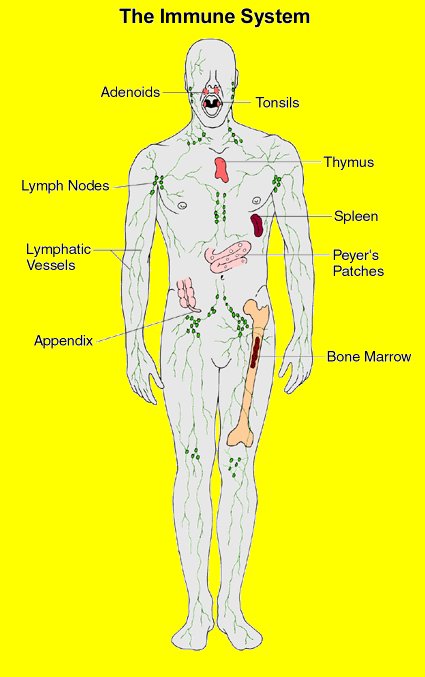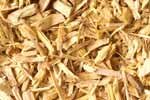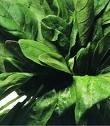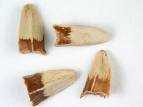Please
down load "Persian
Web Font"![]()
GOD's Provision
GOD is the only Healer with all the herbal medicines that He created for us. Ever since Adam and children of Adam and after them, the ones whom carried with Noah and then Children of Israel, up to our grand parents, and our parents, GOD was the only source of healing for them. when a person would get sick, would use herbs created by GOD in order to get cure or use Cool Wash treatment as GOD prescribed for Job in the Quran.
In chapter 38 of the Quran, GOD tells Job how to cure himself with Cool wash and Herbs.
ûECùnùµ ùÞ ûH¥úÜûF úÝù®ìýù¡ÎC ùíûÜýùwù× íýûÛùC úéýùFùo êùkDùÛ mûC ùEßýúëùC DùÛùlGùµ púÆmC ùÞ -38:41
38:41 - And remember Our servant Job, when he called upon his Lord, indeed Satan has afflicted me with hardship and pain.
úECùpùz ùÞ úkûoDùF úÐùwùO»ú× Cùnùç ùÈûÏVûpûF ªúÆoC -38:42
38:42 - Hit the ground with your foot. This is a Cool Wash as well as a source of drink.
ûHùGÎùDÎC íûÎÞúDûÎ êùpÆûm ùÞ DýùÜýû× ùøùØdùo Ùúèù·ýù× ÙúèùÏS× ùÞ úéùÏçùC úéùÎ DùÜGùçùÞ ùÞ -38:43
38:43 - And We granted him his family and doubled them as a mercy from Us as well as a reminder for those who possess Intelligence .
úECýùÞùC úéýùÛûC úlGù·ÎC ùÙ·ûÛ CùpûFDù¤ úéùÛlùVùÞ DýùÛûC TùÜeùN DùÎ ùÞ ûéýûF Eûp¨Dù¾ DùS»û¨ ùÅûlùìûF núh ùÞ -38:44
38:44 - And take this Herb in your hand and apply it and do not go wrong. We indeed found him steadfast. He was surely a good servant, he was obedient.
Or GOD thought Abraham that our body will Heal itself, as Abraham says,
ûÝëûlèùë ùßúèù¾ íûÜùÃùÏùh êûnýùÎC -26:78
26:78 - He is the One who has created me and he then guides me.
ûÝìûÃwùë ùÞ íûÜúØû·®úë ùßúç êûnýùÎC ùÞ -26:79
26:79 - And He is the One who feeds me and waters me.
ûÝìû¿¡ùë ùßúèù¾ úP¨ûpù× CùmûC ùÞ -26:80
26:80 - And when I get sick, He heals me.
ûÝìûìeúë ýùÙúR íûÜúOìûØúë êûnýùÎC ùÞ -26:81
26:81 - And He is the One who puts me to death then resurrects me.
GOD gave Abraham his guidance and knowledge, because GOD was aware of him. Through GOD given intelligent and knowledge, Abraham could find GOD and, he could find out that GOD is the one who heals people when ever they get sick, without having microscopes and computers. Yet today's deceived pharmaceutical people can not recognize this fact. In our generation, satan came up with pharmaceutical medicines and people are following him with an open eyes.
Did you know every year in U.S.
39,000 People Die of Unnecessary Surgery and other Errors in Hospitals
80,000 People die of Infections in Hospitals
106,000 People Die of Adverse Drug Reactions
Total of 225,000 People Die of Modern Medicine
652,486 People die of Heart Disease
553,888 People Die of Cancer
These people die of pharmaceutical poisons called medicines and, under doctors care, or better yet because of careless and unknowledgeable doctor. And the rest of us die of the life stile created by chemical companies who have poisoned our soil, food supplies, animals, water and air. We are eating much of the wrong things, and not enough of the right things. University of Stanford announced that the average human's life expectancy should be 125 years, but the average life span in U.S. is 72 years, and when you ask them why, they say, "It is because the way we live!?....
Noah lived 950 years and from Bible we read in Genesis 25:7- Abraham lived a total of 175 years.
GOD thought us how to heal ourselves long time ago and this knowledge was past on through our parents up to just right around year 1900. Around that time we decided to spray everything with every kind of Herbicide, Pesticide, Larvicide, Fungicide, we decide to Genetically Modify things that we do not know anything about. GOD The Almighty, Creator of everything in the skies and the land and everything between them, created everything for a reason and, nothing were created in vain. All the plants you see around you were designed and created by GOD for a reason. And GOD grow different plants as an herbal medicine in order to cure our sicknesses.
GOD created provisions for all of His creations and, He wants us to eat from Lawful and Pure Provisions and be appreciative of Him. GOD could have said, " just eat from Lawful provisions" but, He wants us to eat from Pure Food. As we read in the Quran:
ùÚÞúlúG·ùN
úæDýùëûC ÙúOÜúÆ ÚûC ûéýùÏûÎ CÞúpúÇzC ùÞ ÙúÇùÜÂùqùo Dù×
ûPùGýûìù¬ Ýû× CßúÏúÆ CßúÜù×Cùö ùÝëûnýùÎC
DùèýúëùDùë -2:172
2:172 - O you who believe, eat from Pure things We have provided for you and be thankful to GOD, if you worship Him alone.
ùÚßúÜû×åú× ûéûF ÙúOÛùC êûnýùÎC ùéýùÏÎC CßúÃùNC ùÞ DùùGûìù¬ DùÏùÏùd úéýùÏÎC úÙúÇùÂùqùo DýùØû× CßúÏúÆ ùÞ -5:88
5:88 - And eat from what GOD has provided for you, Lawful and Pure. And fear GOD, the one you believe in.
úÙìûdýùo úoßú¿ùº ùéýùÏÎC ýùÚûC ùéýùÏÎC CßúÃýùNC ùÞ DùGýûìù¬ DùÏùÏùd ÙúOØûÜùº DýùØû× CßúÏúÇù¾ -8:69
8:69 - Therefore, you may consume your unexpected gains, for it is both Lawful and Pure. And you shall fear GOD. Indeed, GOD is All Forgiving, All Merciful.
ùÚÞúlúG·ùN úæDýùëûC ÙúOÜúÆ ÚûC ûéýùÏÎC ùPùØ·ûÛ CÞúpúÇzC ùÞ DùGýûìù¬ ùDÏùÏùd úéýùÏÎC úÙúÇùÂùqùo DýùØû× CßúÏúÇù¾ -16:114
16:114 - Therefore, you shall consume GOD’s provision that is Lawful and Pure and be appreciative of GOD’s blessings, therefore, if you are worshiping Him alone.
GOD made food for our body from plants and water and animals and He does not want us poison our food with checmicals. GOD provided for us seeds, soil, and water and, all we have to do is look at them grow, yet we poison GOD's soil and GOD's water, then we call ourselves farmers...!
ùÚßúRúpeùN Dýù× ÙúOëùöùpù¾ùC -56:63
56:63 - Do you see what you harvest?
ùÚßúµûoýùrÎC úÝeùÛ ÖùC úéùÛßúµùorùN ÙúOÛùCùö -56:64
56:64 - Did you farm it or are We the farmer?
ùÚßúèýùÇù¿ùN ÙúOÏù²ù¾ DùØù®úd úéùÜÏù·ùWùÎ úöDù¡ùÛ ßùÎ -56:65
56:65 - Had We willed, We could have turned it into hay, then, you would have been stunned, lamenting;-
ùÚßú×ùp»úØùÎ DýùÛûC -56:66
56:66- -we have indeed suffered a real loss,-
ùÚßú×Þúpeù× úÝeùÛ ÐùF -56:67
56:67- -indeed we have been deprived.
ùÚßúFùp¡ùN êûnýùÎC ùöDùØÎC úÙúOëùöùpù¾ùC -56:68
56:68 - Do you see the water that you drink?
ùÚßúÎûrÜúØÎC úÝeùÛ ÖùC ûÚrúØÎC ùÝû× úæßúØúOÎùrÛùC ÙúOÛùCùö -56:69
56:69 - Do you cause it to come down from the cloud or do We?
ùÚÞúpúÇ¡ùN DùÎ ßùÏù¾ DùVDùVúC úéùÜÏù·ùV úöDù¡ùÛ ßùÎ -56:70
56:70 - Had We willed, We could have made it salty, therefore, why are you not appreciative?
GOD provided us with Lawful and, Pure Food, not polluted; food that is not poisoned with chemicals, yet, satan came up with an idea of mixing chemicals in order to make fertilizer, pesticides, and chemical medicines which they are not natural and, as a result of following the path of satan, today we have poisoned our air, water, soil, food and animals and humans with chemicals and it takes us years to accumulate all these chemicals toxins and the consequences are so many decease that we are infected with, such as: Arthritis, Stomach Ulcers, Digestive Complains, Constipation, Diabetes, Alzheimer's, High Blood Pressures, all kinds of Cancers, Parkinson Diseases, Heart Disease, Chronic Fatigue, Depression, Neurologic Diseases, Muscular Diseases, Skin Diseases. And etc... Then we created doctors and insurance companies and we worship them as a source of healing and savior beside GOD, The Almighty, The only Healer and source of help. Abraham knew that our body heals itself and, he also knew that our body needed Nutrition in order to repair itself and heal itself, that is why he was asking GOD to provide him with fruits.
ûpûhùDÎC ûÖßùìÎC ùÞ ûéýùÏÎDûF ÙúèÜû× ùÝù×Cùö
Ýù× ûMùpùØýùSÎC ùÝû× úéùÏçùC ÁúqoC ùÞ DùÜû×Cùö
CùlùÏùF Cùnùç Ðù·VC ýûEùo úÙìûçùpFûC
ùÍDùÂ
mûC ùÞ -2:126
púìû¥ùØÎC
ùxòûF ùÞ ûoDýùÜÎC ûECùnùµ
íùÎûC úæúýpù®¨ùC ýùÙúR DùÏìûÏù úéú·ýûOù×úDù¾ ùpù¿ùÆ Ýù× ùÞ ùÍDùÂ
2:126 - And when Abraham said; my Lord, make this town secure and provide for its inhabitants all kinds of fruits for those who believe in GOD and the Last Day. He said and the one who disbelieves, then I provide for him a little, thereafter, I see no option for him but the punishment of the Fire, and a miserable abode.
And then GOD answered Abraham's prayer:
úMùpùØùR
ûéìùÎûC íùGWúë DùÜû×Cùö Dù×ùpùd ÙúèýùÎ ÝýûÇùØúÛ ÙùÎùÞùC DùÜû¨oùC
Ýû× Àýù®ùiùOúÛ ùÈù·ù× êùlúèÎC û¸ûGýùOýùÛ ÚûC CßúÎDù ùÞ -28:57
ùÚßúØùÏ·ùë DùÎ ÙúçùpùSÆùC ýùÝûÇùÎ ùÞ DýùÛúlýùÎ Ýýû×
DùÂqýûo ûöíùz ýûÐúÆ
DýùÜúÆ ùÞ DùÏìûÏùÂ DýùÎûC Ùûç ûl·ùF Ýýû× ÝùÇwúN ÙùÎ ÙúèúÜûÇùwù× ùÈÏûOù¾
DùèùOù¡ìû·ù× Mùpû®ùF ûøùëpùÂ Ýû× DùÜÇùÏçùC ÙùÆ ùÞ -28:58
ùÝìûRûoùßÎC úÝeùÛ
íûÇûÏèú× DýùÜúÆ Dù× ùÞ DùÜûOùëCùö ÙûèìùÏùµ CßúÏOùë DùÎßúvùo Dùèýû×úCíû¾
ùTù·Gùë íýùOùd êùpúÃÎC ùÈûÏèú× ùÈýúFùo ùÚDùÆ Dù× ùÞ -28:59
ùÚßúØûÏù± DùèúÏçùC ùÞ DýùÎûC êùpúÃÎC
28:57- 59 - And they said; if we follow the guidance with you, we will be banished from our land. Did we not establish for them a sacred secure sanctuary wherein all kinds of fruits flow and provisions from Our special place? However, most of them do not know. And many a community We annihilated, that they were unappreciative of their provisions, only a few of them left to occupy their places, and indeed We were the inheritors. ? And your Lord never annihilates a community unless He raises a messenger from them who recites Our signs to them. We never annihilate a community until its inhabitants commit injustice.
ûÖDùØÆùDÎC
úMCùm úÐiýùÜÎC ùÞ úøùèûÇù¾ Dùèìû¾ -55:11
úÚDùeëýùpÎC ùÞ ûÀ¥ù·ÎC Þúm ýúHùeÎC ùÞ -55:12
55:11-12 -Therein are fruits and date palms with hanging clusters. Also grains and spices.
DýùGùd
Dùèìû¾ DùÜOùGÛùDù¾ -27 DýùÃùz
ù§oùDÎC DùÜÃÃùz ýùÙúR -26 DýùGù¤
ùöBùØÎC DùÜùGGù¤ DýùÛùC -25
ûéû×Dù·ù¬ íùÎûC úÝùwÛûDÎC ûpú²ÜùìÏù¾ -80:24
ÙúÇûØù·ÛùDûÎ
ùÞ ÙúÇýùÎ Dù·ùOýù× -32 DýùFùC
ùÞ ùøùèûÇù¾ ùÞ -31 DùGÏúº
ùÄûñAùlùd ùÞ -30 DùÏiùÛ
ùÞ DùÛßúOëùq ùÞ -29 DùG©ùÂ
ùÞ DùGùÜûµ ùÞ -28
80:24- 32 -Then let the human being look at his food. Indeed, We pour the water generously. We then split the ground, with cracks. Consequently, We grow therefrom grains, and grapes and pastures,and olives and dates, and dense orchards, and fruits and vegetables. As a provision for you as well as your livestock.
DùÜÎùrÛùDù¾ ûPûýìùý× ûlùÏùGûÎ úéùÜÃúv DùÎDùÃûR DùFDùeùv PýùÏùÂùC CùmûC
íýùOùd ûéûOùØdùo êùlùë ùÝìùF Cùp¡úF ùfùëýûpÎC úÐûvpúë êûnýùÎC ùßúç ùÞ
-7:57
ùÚÞúpýùÆùnùN ÙúÇýùÏù·ùÎ íùNßùØÎC úUûpiúÛ ùÈûÎùnùÆ
ûMùpùØýùSÎC ýûÐúÆ Ýû× ûéûF DùÜVùph~ùDù¾ ùöDùØÎC ûéûF
7:57 - And He is the One who sends the wind bringing the good news of His readily available Mercy. Once the heavy clouds gather, We drive them to the town that was dead, we then send down water therefrom and bring out all kinds of fruits. We thus resurrect the dead, that they may be reminded.
ùÚÞúpúÇ¡ùë ûÖßùÃûÎ ûPùëùDÎC ú½ýûpù¥úÛ ùÈûÎùnùÆ CùùlûÇùÛ DýùÎûC úUúpiùë DùÎ ùTúGùh êûnýùÎC ùÞ ûéýûFùo ûÚmûDûF úéúNDùGùÛ úUúpiùë úHûìýù®ÎC úlùÏùGÎC ùÞ -7:58
7:58 - As for the town that is pure, its plant germinates with its Lord’s permission. And as for the one that is impure, only less potent plants germinates. We thus explain Our proofs for the people who are grateful.
If you have noticed, they have been announcing in news media, that the total amount of nutrition of plants 60 years ago, were 5 times greater than plants harvested today! Another words, you must consume 5 apples today, in order to get the same amount of nutrition of only 1 apple that you used to eat 60 years ago!....That was the time that, we decided to IMPURE GOD's creations, by spraying everything with every kind of Herbicide, Pesticide, Larvicide, Fungicide, we decided to Genetically Modify things that we do not know anything about, and.....
Yet, GOD does not want us to corrupt the land.
êùßùç lùÃù¾ íûGù©ùº ûéìùÏùµ ÐûÏeùë Ýù× ùÞ íûGù©ùº ÙúÇìùÏùµ ýùÐûeùìù¾ ûéìû¾ Cßù»®ùN DùÎ ùÞ ÙúÇùÜÂùqùo Dù× ûPùGýûìù¬ Ýû× CßúÏúÆ -20:81
20:81 - Eat from the Pure provision We have provided for you and do not rebel there in, then My wrath descend upon you, and whomever is the recipient of My wrath, he is indeed fallen.
ùÝìûÜûweúØÎC Ýýû× úúHëûpù éýùÏÎC ùPùØdùo ýùÚûC Dùù·ùØù¬ ùÞ Dù¾ßùh úæßúµkC ùÞ DùèûeùϤûC ùl·ùF û§oùDÎC íû¾ CÞúlûw¿úN DùÎ ùÞ -7:56
7:56 - And do not corrupt the land after it is set right and call upon Him out of fear and hope. Surely GOD's Mercy is always near the do-gooders.
ùkDùwù¿ÎC ýúHûeúë DùÎ úéýùÏÎC Þ ùÐwýùÜÎC ùÞ ùQpùeÎC ùÈûÏèúë ùÞ Dùèìû¾ ùlûw¿úìûÎ û§oùDÎC íû¾ íù·ùv íýùÎùßùN CùmûC ùÞ -2:205
2:205 - And once he goes away, he roams the land corrupting, destroying the crops as well as people. And GOD does not like corruption.
Quran is the final book sent by GOD and, Muhammad was the last prophet. Are we waiting for another book from GOD to tell us about medical insurance and medicines and doctors, and pesticides that killing honey bees as our food pollinators? Did you know because of chemical toxins, there are no Honey Bees left in some areas of China and, they use human as pollinator instead of Honey Bee, and it takes one person to pollinate only 3 trees per day? And we are cutting trees right and left ...
GOD povided for us our Sun with Solar energy, yet we pollute our air with gas burning automobile. Yet, we think with all these technologies that we are creating around us, we are more blessed than our older generations. If you think that GOD is blessing us more than Abraham, Moses, Jesus, and Muhammd, you better think again!
úúÝìûGýú× ýúÞúlùµ ÙúÇùÎ úéýùÛûC ûÝù®ìù¡ÎC Mùßú®úh Cßú·ûGýùOùN DùÎ ùÞ DùGûýìù¬ DùÏùÏùd û§oùDÎC íû¾ DýùØû× CßúÏúÆ úuDýùÜÎC DùèýúëùDùë -2:168
2:168 - O you people; eat from what is Lawful and Pure on the Land and do not follow the path of Satan. Surely he is your most ardent enemy.
Right around 1900 satan who follows different ways to deceive us, came up with an idea of vaccines, in which contain 100 different kinds of viruses that we could not see 30 years ago under the microscopes. Dr. J. Anthony Morris, former Chief Vaccine Control Officer at the FDA, said, "There is no evidence that any influenza vaccine thus far developed is effective in preventing or mitigating any attack of influenza. The producers of these vaccines know that they are worthless, but they go on selling them anyway." GOD wants us to experince all these ailments, and GOD designed and created our body with immune systems. That means we are not suppose to get sick because our body repairs itself.
Immune System
Immune System recognizes and destroys foreign substances and organisms that enter the body. The immune system can distinguish between the body's own tissues and outside substances called antigens. This allows cells of the immune army to identify and destroy only those enemy antigens. The ability to identify an antigen also permits the immune system to "remember" antigens the body has been exposed to in the past, so that the body can mount a better and faster immune response the next time any of these antigens appear.
Lymphocytes, white blood cells that develop in bone marrow and circulate throughout the body in the lymphatic system, are a vital part of the immune system. Lymphocytes can be divided into two subgroups:
B lymphocytes and T lymphocytes. B lymphocytes (or B cells) produce immunoglobulins, also called antibodies. These protein molecules attach themselves to specific antigens and work with another type of white blood cell, called phagocytes —scavenger cells that surround and digest infected cells or microorganisms—to destroy the invaders. T lymphocytes (or T cells) help control the immune response and destroy foreign antigens directly. The activity of B cells and T cells targets specific antigens. This means that each time a new kind of antigen invades the body, the immune system must produce a new round of B cells and T cells, which attack only that antigen. It is estimated that the immune system can create more than 100 million types of antibodies. As B cells and T cells mature, they begin to recognize which tissues belong in the body and which do not. These cells become "memory" cells that remember a particular antigen, so that the next time it appears, the immune response can mobilize quickly. In some cases, people have permanent immunity to a disease; for example, people who contract chicken pox usually will not have it again—or, if they do, they will have a much more mild case. The immune system works with amazing complexity. When a B cell encounters a foreign invader, it starts to produce immunoglobulins, or antibodies. Like a key designed to fit only a specific lock, an antibody "locks" onto a single type of antigen like an identifying marker. Once the antibody attaches to an antigen, one class of T cells called helper T cells alerts other white blood cells to head toward the site, while another class called killer T cells begins to destroy the antigen marked by the antibody. At the same time, millions of antibodies swarm through the bloodstream to attach to any more of that type of antigen and mount a larger attack. The immune system also includes other proteins and chemicals that assist antibodies and T cells in their work. Among them are chemicals that alert phagocytes to the site of the infection. The complement system, a group of proteins that normally float freely in the blood, move toward infections, where they combine to help destroy microorganisms and foreign particles. They do this by changing the surface of bacteria or other microorganisms, causing them to die.
|
The organs involved with the immune system are called the lymphoid organs, which affect growth, development, and the release of lymphocytes (a certain type of white blood cell). The blood vessels and lymphatic vessels are important parts of the lymphoid organs, because they carry the lymphocytes to and from different areas in the body. Each lymphoid organ plays a role in the production and activation of lymphocytes. Adenoids: Two glands located at the back of the nasal passage. Tonsils: Two oval masses in the back of the throat. Lymphatic System: is a system that contains lymph nodes and a network of channels that carry fluid and cells of the immune system through the body. Spleen: A fist-sized organ located in the abdominal cavity. Appendix: A small tube that is connected to the large intestine. Blood Vessels: The arteries, veins, and capillaries through which blood flows. Enzyme: Is a protein that helps speed up a chemical reaction In the body. Antigens: are substances that are recognized as a threat by the body's immune system, which triggers the formation of specific antibodies against the substance. Bone marrow: is the soft tissue inside bones where blood cells are made. Immunity is the condition of being protected against an infectious disease. Immunity often develops after a germ is introduced to the body. One type of immunity occurs when the body makes special protein molecules called antibodies to fight the disease-causing germ. The next time that germ enters the body, the antibodies quickly attack it, usually preventing the germ from causing disease. |
|
Some of the informations on this link were taken from: (healthcare.utah.edu/.../Infectious/immune.htm) and (www.herbdoc.com) and (www.humanillnesses.com/.../Body-Defenses.html) and (foodmathers.tv)
But, the first thing Pharmaceutical Society dose is to cut these parts out of our body.! They cut off the only organs that keeps us from getting sick, ever since from childhood ....! As if to say that, GOD's creation was not complete and we know better than GOD, and your body does not need these parts...! Can you imagine the expansion of this crime!? GOD created us in the best design.
The way GOD created our organs is that they repair themselves and repeat themselves after few weeks or few months. For example, red blood cells live for 4 months and then die and new blood cells recreates.
ùÚßúÇù¾ßúN íýùÛùDù¾ úæúlìû·úë ýùÙúR ÄÏùiÎC CúÞùlGùë úéýùÏÎC ûÐú úæúlìû·úë ýùÙúR ùÄÏùiÎC CúÞùlGùë Ýýù× ÙúÇûñDùÆùpúz Ýû× Ðùç Ðú -10:34
10:34 - Say, does any of your partners for God initiate creation then repeat it? Say, GOD initiates the creation then repeats it. How can you then deviate?
ûPùeûÏýù¥ÎC CßúÏûØùµ ùÞ CßúÜù×Cùö ùÝëûnýùÎC êûrWùìûÎ
úæúlìû·úë ýùÙúR ùÄÏùiÎC CúÞùlGùë úéýùÛûC DýùÃùd ûéýùÏÎC ùlµùÞ Dù·ìûØùV
ÙúÇú·ûVpù× ûéìùÎûC -10:4
ùÚÞúpú¿Çùë CßúÛDùÆ DùØûF úÙìûÎùC úECùnùµ ùÞ ûÙìûØùd Ýýû× úECùpùz ÙúèùÎ
CÞúpù¿ùÆ ùÝëûnýùÎC ùÞ û¯wûÃÎDûF
10:4 - To Him is your final destiny, all of you, GOD’s promise in the truth. Indeed He initiates the creation then repeats it in order to reward those who have believed and led a righteous life justly. As for those who have disbelieved, awaiting them is hellish drink and a painful punishment, because of their continuous disbelief.
ÚûC
ÙúÇùÜùçpúF CßúNDùç ÐúÂ ûéýùÏÎC ¸ýù× úéùÎûöùC û§oùDÎC ùÞ
ûöDùØýùwÎC Ýýû× ÙúÇúÂúqpùë Ýù× ùÞ úæúlìû·úë ýùÙúR
ùÄÏùiÎC CúäùlGùë Ýýù×ùC -27:64
ùÝìûÂûlù¤ ÙúOÜúÆ
27:64 - Who is the One who initiates then repeats it? And who is the One who provides for you from the sky and the land? Is there any other god with GOD? Say; present your proof if you are truthful.
púìûwùë ûéýùÏÎC íùÏùµ ùÈûÎùm ýùÚûC úæúlìû·úë ýùÙúR ùÄÏùiÎC úéýùÏÎC úêûlGúë ùÀìùÆ CÞùpùë ÙùÎùÞùC -29:19
29:19 - Do they not see how GOD initiates creation then repeats it? Indeed this is easy for GOD.
We are hypnotized by satan, let us test ourselves. If you want to buy an orange and you find a label on it that says, "This orange will give you nausea, stomach ache, dizziness, vomiting, and cause birth defect, or it may killyou, would you buy that orange? No you would NOT! But, why is it that we pick up a medicine over the counter and the label says, you may experience, nausea, stomach ache, dizziness, vomiting, and cause birth defect, and might kill you, then we even pay for it to get all these diseases, just because it says on it "Relief headaches" ?!.....
GOD new satan will mislead people through pharmaceutical companies in order to Change GOD's Creations, that is why we have these verses 4:118-119 in the Quran. GOD has cursed him (statan) and, he said, I have indeed possessed a definite share of your servants. And, I will mislead them and will tempt them and command them to Mark the Ears of Animals and to Change GOD's Creation. Again whoever takes satan as an ally besides GOD then he has suffered a clear loss.
Dù¨Þúp¿ýù× DùùGìû¥ùÛ ùÅûkDùGûµ Ýû× ýùÚùnûiýùN ùDùÎ ùÍDùÂ ùÞ úéýùÏÎC úéùÜù·ýùÎ -4:118
4:118 - GOD has cursed him and he says I have indeed possessed a definite share of your servants.
Ýù× ùÞ ûéýùÏÎC ùÄÏùh
ýùÚúpýûìù»úìùÏù¾
ÙúèýùÛùpú×ùDùÎ ùÞ ûÙù·ÛùDÎC ùÚCùmCùö ýùÝúÇûOùGúìùÏù¾ ÙúèýùÛùpú×ùDùÎ ùÞ
ÙúèýùÜùìûýÜù×úDùÎ ùÞ ÙúèýùÜýùÏû¨úDùÎ ùÞ -4:119
DùùÜìûGýú×
DùÛCùpwúh ùpûwùh lùÃù¾ ûéýùÏÎC ûÚÞúk Ýýû×
DýùìûÎùÞ ùÝù®ìýù¡ÎC
ûnûiýùOùë
4:119 - And, I will mislead them and will tempt them and command them to mark the ears of animals and to change GOD’s creation. Again whoever takes satan as an ally besides GOD then he has suffered a clear loss.
CùùoÞúpúº DýùÎûC úÝù®ìýù¡ÎC Ùúçúlû·ùë Dù× ùÞ ÙûèìýûÜùØúë ùÞ Ùúçúlû·ùë -4:120
4:120 - He promises them and tempts them. However, Satan does not promise them but an illusion.
































































































































